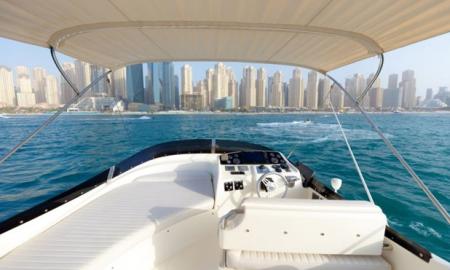One of the reasons why we like to travel by train is because sometimes you get a big time at stations that could be a palace, a garden or even a spaceship. And so we're going to imagine this tour of the 10 most beautiful train stations in the world.
#1. Grand Central Terminal, New York (United States)
Perhaps it is the most famous station in the world and for many the most beautiful. It has been said that in its hall there are days when more tourists are passing through it than those who are going to get on a train. In 1968 they were on the verge of demolishing it to raise a skyscraper, but luckily the citizen wave that was organized in its defense led by Jacqueline Kennedy Onassis and the architect Philip Johnson managed to save it and this 2013 has turned 100 years.
Inside have been shot memorable film sequences, but if we had to choose one, we would stay with Cary Grant gliding through his hall in the death on the heels of Alfred Hitchcock.
#2. Cologne Central Station, Cologne (Germany)
The station of Cologne sneaks into this ranking with a little help, because it is the imposing Cathedral of the city, which is a stone's throw away, which creates a unique atmosphere when you get off one of the train. In its glazed structure, the station keeps nineteenth-century interior thanks to its iron structure, with three arches on the platforms.
#3. St. Pancras Station, London (United Kingdom)
Head of Eurostar trains since 2007; St. Pancras station is one of those monumental buildings that have been given so much to the city of London.
It was built in 1868 to connect the East Midlands and Yorkshire with the capital and was made with all the technical advances that the Industrial Revolution offered. Brick and neo-Gothic works gave the city a giant as a station, which in 1873 was joined by a hotel then the Midland Grand Hotel, in operation until 1935.
Until 2011 the rooms of the hotel remained empty, some of them were reused as offices at the most, reason why they happened to be known like 'the cameras of St. Pancreas’.
However, a new project recovered that part of the building and today you can go back to sleep next to the station, in the brand new St. Pancras Renaissance London Hotel.
As anecdotal data, in May of 1941, in one of the intense German blight that besieged London during World War II , the station was hit by a bomb that turned upside down some of the roads that reached it, luckily the building did not It suffered great damage.
#4. Los Angeles Union Station, Los Angeles (United States)
With whitewashed walls and great tower it looks more like a church than a season, but the Union Station in Los Angeles is an institution in which to train stations are concerned. Despite its large size, it is small compared to other stations in the country.
The group of architects that was commissioned to raise it in 1939 did so in a revival of styles, such as the Dutch colonial or Streamline Modern, which gave the building a casual look with terracotta floors and travertine marble and two landscaped courtyards at both sides of the waiting room.
The station, as it could not be otherwise being in the city of the cinema, has been used like location in multitude of films, such as Pearl Harbor, Speed or Blade Runner.
#5. Chhatrapati Shivaji Station, Mumbai (India)
Bombay has a Gothic palace by train station. Inaugurated in 1887 as Victoria Terminal in honor of Queen Victoria, empress of India at that time, her name returned to that of Chhatrapati Shivaji in 1996, under a governmental initiative that wanted to rename with Indian names all the British-born monuments of the country.
Its profile, designed by the architect Fredrick Williams Stevens inspired by the European medieval world, in a typical Victorian revival, and with the occasional Indian traditional architecture touch, reigns over the bustle of the city like a giant that feels good over the years. The UNISCO, decided to include in its list of World Heritage sites.
#6. Station of Porto de São Bento, Porto (Portugal)
The Porto de São Bento station in Porto is like a treasure chest. Inside, it houses 20,000 delicate blue and white tiles, one of the must-haves in Portugal. The most brilliant star of Portuguese tile work, Jorge Colaço, put his mind to work in 1906 to cover the walls of the train station that took the twentieth century to the city.
The entrance to Oporto by King Jõao I together with his wife Philippa de Lancaster in 1387 or the conquest of Ceuta in 1415 are the national episodes that the artist chose to decorate the foyer, to which a colorful frieze dedicated to history was added of transportation in Portugal.
The station was named after the church that stood on the site that occupied the station, São Bento de Ave María. As a curiosity, although the first train arrived in 1896, it was not until 1916 when the station officially opened . You know, sometimes the things of the railroads go slowly.
#7. Atocha Station, Madrid (Spain)
The station of Atocha was built in the purest continental style, in wrought iron like the large Gares of Paris, with a size larger than that of many European stations. In 1892 it was inaugurated with the name of Estación de Mediodía and since then it has not stopped growing.
During the Civil War it was a military objective of the first order, although a beautiful profile never suffered irreparable damage. With the arrival of High Speed in 1992, the complex underwent a comprehensive reform, reaching its current appearance. It is curious, once inside it, to find a tropical garden, it is also true that it has always looked like a glass greenhouse.
It is precisely her little orchard that has made her famous among lovers of train stations and for us one of the 100 things we like the most in Madrid.
#8. Antwerp Central Station, Antwerp (Belgium)
The architect Luis Delacenserie should be considered a hero in Belgium , because thanks to him, Antwerp has one of the most beautiful stations in the world. An explosion of Beaux Arts covers the entire station, from its magnificent waiting room to its imposing façade, passing through that monumental arch that welcomes passengers as soon as they get off the train. Built in 1905 as the final part of the Brussels-Mechelen-Antwerp line , today it continues to serve as an entrance via train to the city.
#9. Marunouchi Station, Tokyo (Japan)
Near the Imperial Palace and the bustling district of Ginza, the Marunouchi station in Tokyo appears imposing in a curious Western style, perhaps due to the opening moment that the country was experiencing at the time of its construction. After several delays by the Russo-Japanese war, the plans that located a new central station were put in March in 1908.
Many wanted to see in design of Tatsuno Kingo , passionate about the western style, a nod to the station of Amsterdam, but true is that nothing had to do with its creation. During World War II it was partially destroyed, rebuilding in two floors instead of three and with gabled roofs to replace its famous domes.
#10. Gare du Nord, Paris (France)
Inspired by the classic scheme of Roman baths, j. Hittorff raised between 1842 and 1865 the Gare du Nord in Paris, in a monumental facade adorned with nine statues that symbolize the cities that connected with the railway network of the station. Today we should add a tenth, London, because this is the gateway to the Euro star, a train that links the two capitals through the tunnel that crosses the English Channel.
#11. Beijing Central Station, Beijing (China)
A fusion of traditional Chinese architecture and the style prevailing in the 50s of the last century gave birth to the new Central Station of Beijing, which came to replace one erected in 1903.
The reason was clear, to show the world what the Republic was like Popular China ten years after the Cultural Revolution.
In 1959 work began on the project, which would end shortly afterwards with the monumental complex that can still be admired. The opening of a new station in 1996, the one in the west, caused its use to fall, but its architecture has made it one of the most spectacular stations in the city.
#12. Kyoto Station, Kyoto (Japan)
A spaceport, that's what the Kyoto train station looks like. Seen from the outside, the contrast with the millennial environment of Kyoto, suggests a series of cubes of glass and steel emerging from the earth.
Of course, this was served when its construction was imminent, with bitter detractors on the warpath who claimed that the station would be a scar on the city map. However, with it came the modernity to other points of the city that managed to unite in Kyoto tradition and futurism.
As for the station, this is the fourth one that is located in the same place, and it brings together all the technological toys that the Japanese technology has given to the world. We assure you that you will not mind spending time in it.
#13. King's Cross Station, London (United Kingdom)
In 1852 the station of King's Cross, which was going to operate with the destinies of the east coast and the northwest of the country, was built in the same place as a fever and smallpox hospital. Its profile of brick and iron has been partly transformed with the expansion initiated in 2005 and which has given it a futuristic hall with an iron cascade.
The building adjoins the train station of St. Pancras, and its proximity is such that it can be considered that both form the same railway complex. From it came out in the books of JK Rowling the express that took to Hogwarts, school of magic and sorcery, to the characters of the saga Harry Potter.
The station, aware of the pull, installed a luggage cart through a wall under the sign platform 9 and 3/4, as in books and films. In addition, a legend states that this was the site where the final battle of Queen Boudicca against the Romans took place, and that the body of the sovereign rests at some point of the station.






